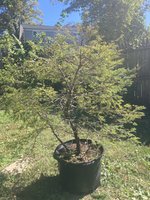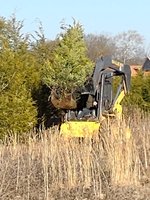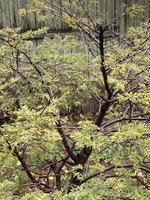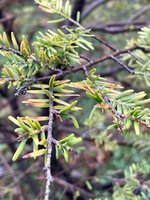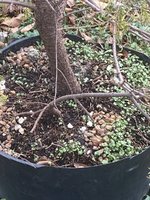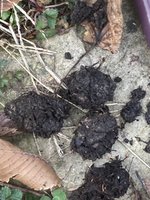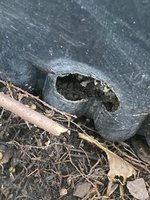Doing a wedge would be difficult in this nursery pot. Maybe a “core sample” could give me an idea if I am working with burlap’d clay and let some oxygen in? I’ve seen a technique where a chopstick is hammered in and worked in a circle and back filled with some pumice. Water permeates the surface quite well, but I could cut a window or two along the bottom of the pot to enhance drainage and let some air in?
I could just leave it be and cross my fingers, but I am thinking there could be some steps short of an emergency repot that will give it a breath of life to power it through more intensive root operations in future years.
There were about twenty trees to choose from at the nursery, and they were all pretty weak except for one or two that had completely given up the ghost. My assumption at the time was that fall leaves hadn’t been cleared out in previous years and that some attention and more would perk it back up. But, I don’t think this sort of chlorosis is line line with that theory.
Maybe it was more of a scenario like
@Yosemite Goat suggested. Hastily dug dug up from forest or field and transplanted with clay around the roots. Then the automatic watering at the nursery led to the weakened state, exasperated by the osmcote sprinkled on the surface?
